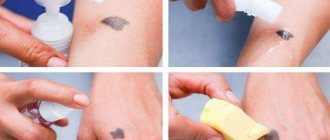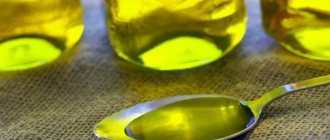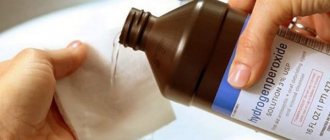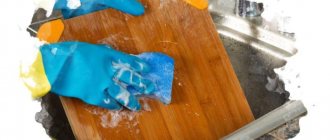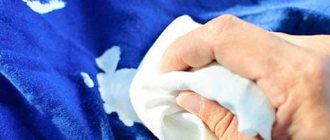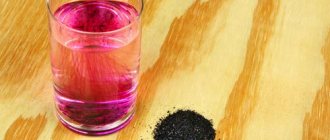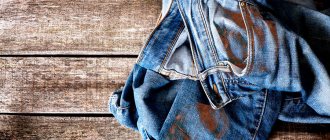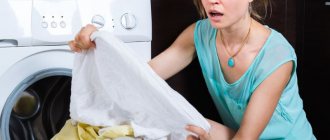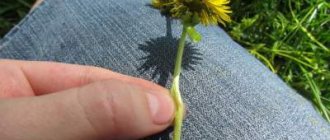How to remove stains from a tablecloth: Depositphotos Got stains on the tablecloth? How to remove stains is a question, the answer to which depends on the nature of the stains and their age. In most cases, you can do without newfangled bleaches by using cheap products that every housewife has on hand. If you don’t know how to remove stains on a tablecloth, follow the advice of experienced housekeepers.
Rules for removing stains from tablecloths
Removing stains from a tablecloth, even with modern means, is not so easy. It is not always possible to achieve the desired effect, so it is important to adhere to a few simple rules related to the process of removing contaminants from fabric:
- You can only rub stains on the product with a soft brush; this must be done from the wrong side, having first moistened the bristles with water. This will help protect the fabric from damage;
- If, when removing stains, some liquid products are used that are applied directly to the fabric, then this procedure must be performed with a cotton pad or a piece of soft cloth;
- You cannot rub the stain over clean areas of the product, so cleaning must be done from the edges of the stain, moving towards its central part;
- Any chosen product must first be tested on an inconspicuous area, especially if the type of fabric is unknown;
- To completely remove traces of food and fat deposits, after removing the stain, you need to wash the table cover by hand or in a machine on a suitable setting;
- Despite the fact that our grandmothers cleaned linen tablecloths by boiling, this experience is not worth repeating. After several boiling procedures, the tablecloth may lose its original appearance;
- To achieve the desired result, you can use various methods. The main thing is that the previous cleaning agent is removed from the surface of the fabric;
- In order not to harm the product, it is better to start cleaning with the simplest means. And only if they do not give the desired result, you can use more aggressive substances;
- It will be easier to remove stains if you do not postpone this process until later. The fresher the stain, the easier it is to get rid of it. Only the resulting dirt can be washed off even with simple soap.
We recommend reading: How to remove brilliant green from linoleum
Kerosene
But if gentle folk remedies do not help to cope with pollution, then you can correct the situation with the help of kerosene or household gasoline. These substances are suitable for particularly persistent and long-standing stains.
To remove stains, you must use only highly purified household gasoline. Regular automobile fuel is not suitable for these purposes. You can buy household gasoline at a hardware store.
The product is applied liberally and left for about 20-30 minutes. After this, the textiles are rinsed and washed well. It is best to air dry the product to remove the unpleasant odor.
How to remove fresh stains from a tablecloth
It is easier to remove stains from a white or colored tablecloth if you start cleaning immediately after they appear. To quickly remove the blot from the fabric, you can use several tricks:
- A regular dishwashing detergent will do a great job of removing greasy stains. It contains special components that can quickly break down fats. Usage is as simple as possible: pour the liquid onto the stained area, rub a little, and put it in the wash;
- Regular chalk will also help to save decorative items and wash them. It is necessary to pour chalk powder onto the stain, wetting it a little if necessary. After a few hours, the tablecloth can be washed in a soapy solution, after removing the chalk with a dry cloth;
- No less effective is the use of laundry soap, which quickly removes grease stains, as well as traces of coffee, juice and tea. In order to wash a tablecloth with soap, you just need to rub it on the stained area, let it sit for about 20 minutes and wash it in a machine;
- Ammonia or ammonia can also be used on fresh stains. To do this, mix 4 tablespoons of ammonia with a tablespoon of salt and wait about an hour. Then the product must be washed.
Wax stains
After a romantic dinner, wax stains can ruin your mood for a long time. To prevent this from happening, you need to perform the following “machinations”.
- Remove the wax drops with a knife. Iron the remains, after placing several napkins under the fabric and on its surface.
- Removing smudges from a colored candle falls on the shoulders of the stain remover.
How to wash a tablecloth from old stains
It is more difficult to remove old stains from a tablecloth than fresh ones. But don’t despair: time-tested methods that our parents and grandmothers used will come to the rescue.
How to remove stains from a tablecloth using folk remedies
Among the folk methods, there are several particularly effective methods:
- You can remove yellow stains on a tablecloth using gasoline. To do this, a cotton pad must be moistened in a flammable mixture and applied to the problem area. After 20 - 30 minutes, the yellowness will begin to fade, the fat will break down, after which you can wash the tablecloth with regular powder. To remove unpleasant odors, it is recommended to use fabric softener;
- Potato starch is no less effective in combating old traces of fat. The use is simple: heat the starch, slightly diluted with water, in a metal bowl. Place the resulting slurry on the dirt and leave for 10 - 15 minutes. Then remove the starch with a brush or sponge and wash the tablecloth;
- Hydrogen peroxide. To remove old stains, you need to soak the tablecloth in water with the addition of peroxide: add 2 tablespoons of disinfectant per 1 liter. If the stain is of unknown origin, then you can use peroxide directly on the fabric, moistening the problem area with it. After the mark begins to disappear, you can wash the product with regular powder;
- A mixture of ammonia and peroxide (1:1 proportions) can cope with traces of juice, fruits and vegetables. You need to pour a little liquid onto the problem area and let it brew. After 20 minutes you can wash the tablecloth. If this method does not bring the desired result, the effect can be slightly enhanced by adding 5 crushed aspirin tablets to the solution;
- Glycerin can also remove old stains of unknown origin from a tablecloth. To do this, you need to heat a small amount of the substance in a water bath, apply it to the problem area and wash it after half an hour. Glycerin can also be combined with ammonia in equal proportions and applied according to the same principle. If a specific ammonia smell remains on the product, you can rinse the tablecloth in water with added aromatic substances;
- Citric acid, mixed in equal proportions with hydrogen peroxide, will help remove stubborn stains such as traces of juice, wine and fruit. You just need to apply the mixture to the stained area and wait at least 10 minutes. After this, wash the tablecloth so that it becomes pure white, without streaks;
We recommend reading: The benefits of white wine and how to make it at home
- Toothpaste (powder) and aspirin tablets. Combine the ingredients in a bowl so that the consistency of thick sour cream is obtained. Apply the mixture to the fabric and rub a little with a brush and leave for 15 minutes. After this, the product can be washed in the usual way until it becomes boiling white.
How to remove old stains on a tablecloth using household chemicals
It is often easiest to wash a white tablecloth from yellow stains, because very aggressive agents, such as bleach, can be used on light-colored fabric. With colored items, things are much more complicated, since the main goal is to maintain the presentable appearance of the tablecloth and at the same time remove dirt. In this case, it is necessary to approach the selection of the right product with special care.
- Amway oxygen bleaches. The product line of this brand includes gentle stain removers. They can be applied to old marks from food or drinks, wait the time indicated on the package and wash in the usual way. You can also add bleach directly during washing.
- Stain remover Vanish. Another popular product that helps to efficiently remove an old stain on a tablecloth. It needs to be applied to the stained area, wait a few minutes and wash with powder, adding bleach of the same brand to the washing machine.
- White. If the tablecloth is white and the fabric is durable, you can use whiteness, which will remove almost any stain in a short time.
Laundry soap
The simplest and most affordable method of whitening, which, by the way, is used in restaurants, is to wash stains with laundry soap. The tablecloth must be moistened, hung on a rope, and then all dirt must be washed off.
The soaped textiles must sit for several hours, and then all marks are washed out by hand. All that remains is to wash the item in the washing machine, adding a small amount of bleach.
Features of removing stains from different fabrics
The methods for removing stains may also depend on what fabric the tablecloth is made from. High-quality linen fabric can be boiled if desired, but this method will destroy fine synthetics.
Attention! Before the cleansing procedure, you need to find out what type of fabric it is.
How to remove stains from a linen tablecloth
Removing stains from a linen tablecloth is quite easy. You can use any of the listed means. If the product is white, then if necessary, it can be boiled in soapy water. For this:
- Pour water (halfway) into a large saucepan.
- Add powder containing bleaching particles.
- Put a tablecloth there.
- Boil until the stain disappears completely, stirring the laundry occasionally.
- Rinse.
You can wash a linen tablecloth from old stains using any traditional method.
How to remove stains from a synthetic tablecloth
Removing stains from a tablecloth made of polyester or other synthetic material is also not difficult. The main thing is not to use aggressive agents and not to subject it to heat treatment. It is best to opt for some special product or use one of the traditional methods:
- You can wash the tablecloth with alcohol: apply the liquid to the problem area and leave for 5 - 10 minutes. Wash.
- Heat a few tablespoons of glycerin to 30 degrees and apply to the stain. Wash thoroughly.
- The product can also be washed with turpentine. To do this, you need to dilute it in water in a 1:1 ratio, apply it to food or drink stains, wait 30 minutes, wash and rinse thoroughly.
How to remove stains from a Teflon tablecloth
Teflon coatings are highly resistant to stains. Therefore, tablecloths made of this material are not at all afraid of spilled drinks, drops of fat or pieces of fruit falling on them.
Important! Teflon tablecloths cannot be washed at temperatures above 40 degrees. It is also advisable to turn off the spin and dry mode on the machine.
Boiling
Boiling is an old method of our great-grandmothers, which helps to whiten various yellow stains and restore the whiteness of the fabric.
For boiling you will need:
- 100 g brown soap.
- Large grater.
- Boil down.
- A wooden stick to stir laundry.
- Water.
Grate half a bar of soap and dissolve in warm water. Fill a large saucepan or boiling pot with water and pour the soap solution into it. The soap must dissolve well, otherwise it may leave yellowish stains on the laundry.
When the soap solution begins to boil, immerse the tablecloth in it and boil, stirring constantly. After boiling, the tablecloth is rinsed in cold water. When boiling, you can add lemon juice or salt to the pan to make the tablecloth dazzling white.
Useful tips
It is not always necessary to look for an answer to the question of how to wash a tablecloth from traces of food. Sometimes you have to remove other types of stains from fabric. In this case, the decor item can be saved by the following means:
- A ballpoint or gel pen can be washed with alcohol or gasoline. To do this, you need to apply the liquid to the stain, wait about 30 minutes, and wash in water with the addition of powder and salt.
- Cosmetics, including lipstick, can be washed with ammonia. A few drops of ammonia applied to the stain will quickly remove dirt. After this, the product must be washed in water with powder and fabric softener so that no unpleasant odor remains on it.
- If wax gets on the fabric, it must be carefully removed with a knife. Then place a sheet of white paper under the stained area, cover the stain on top with the same sheet and iron it with an iron. The wax will quickly eat into the paper, leaving not a trace on the tablecloth.
- You need to use vinegar to remove yellow stains from the tablecloth that have formed due to its long storage. Pour a glass of vinegar into a liter of water. Soak a piece of the product in this liquid. After a few hours, wash with powder.
Yolk and glycerin
You can remove yellow marks from a white tablecloth using raw yolk and liquid glycerin.
Beat the yolk until foamy. And then the same amount of glycerin is introduced into it. The mixture should have a uniform consistency. All contaminated areas are lubricated with the composition. After 30-40 minutes, the item is rinsed and washed by hand with bleaching powder.
Talc
If the yellow stain is already old, and it remains from fat, then you can get rid of it with the help of talcum powder or crushed chalk.
The sequence of actions is as follows:
- The tablecloth is laid out on the ironing board.
- All affected areas are thickly sprinkled with talcum powder.
- Using blotting paper, the dirt is ironed with a hot iron.
- Finally, the tablecloth is washed with powder.
Each housewife has her own ways of bleaching table textiles. Choose a product that is at hand and begin the fight against unsightly stains that spoil the appearance of a snow-white, festive tablecloth.
How to bleach a linen tablecloth at home
Source
How to bleach linen, linen fabric at home
Linen is an excellent material for clothing, because it is a natural fabric that does not cause allergies and allows the skin to breathe. At the same time, it looks presentable and elegant. A white linen suit or trousers will be the most suitable option for a walk or work on a hot summer day.
In addition, thick, beautiful fabric is often used as a tablecloth. A white linen tablecloth will brighten up every table and dinner party.
Linen is distinguished by its high strength and durability, so with proper care the fabric will last for several decades. But white material gets dirty easily and gets dirty quickly. Even a minor stain can ruin the appearance of the item.
In addition, the white color gradually turns yellow or gray. To return things to their former luxurious and presentable appearance, you need to update the fabric. Let's find out how and with what to bleach linen at home.
Prevention is easier than cure
Before we tell you the methods and folk recipes, we will recommend a simple way to prevent the fight against dirt. Be sure to provide enough paper towels on the holiday table. With their help, you can easily blot up liquids and brush away food crumbs.
In some cases, it will be enough to simply wash the material after the celebration and not resort to complex methods. In other cases, use the life hacks below.
Choosing a product in the store
To effectively bleach fabric at home, store-bought products are suitable. The advantage is that you will spend a minimum of time and effort. And thanks to the wide variety of products on store shelves, you can find both cheap and expensive, but more effective options. There are 3 types of bleaches:
- Chlorine based.
- Optical.
- Oxygen.
Related links: Which is better: pressure cooker or multicooker
To understand which one we need, we need to become more familiar with all the substances. Each product has its own advantages and disadvantages, thanks to which we can determine the bleach we need.
What are the best remedies?
The chemical industry is constantly developing, so there are a lot of bleaching products. But the entire range is divided into 3 groups: optical, oxygen and chlorine. Optical ones only pretend that the fabric is bleached. There is no bleaching; the fabric is simply dyed snow-white.
For this purpose, a special substance is used that reflects light. Optical brighteners can contain laundry detergent. The purpose of optical brightener is to create the desired visual effect. It is not used for bright items as it may change the color of the fabric. Chlorine-based solutions are very effective and affordable. They disinfect the fabric. It is unlikely that there are bleaches now that could compete with chlorine-containing substances.
The disadvantage of this bleach is that chlorine damages the fabric and after several bleaches, gaps may appear on the clothes. Before soaking the fabric, the substance must be dissolved in water. If you use bleach directly on clothes in undiluted form, there is a high risk that the fabric will deteriorate. If clothing is made from wool or silk, it is prohibited to use a chlorine-based substance.

